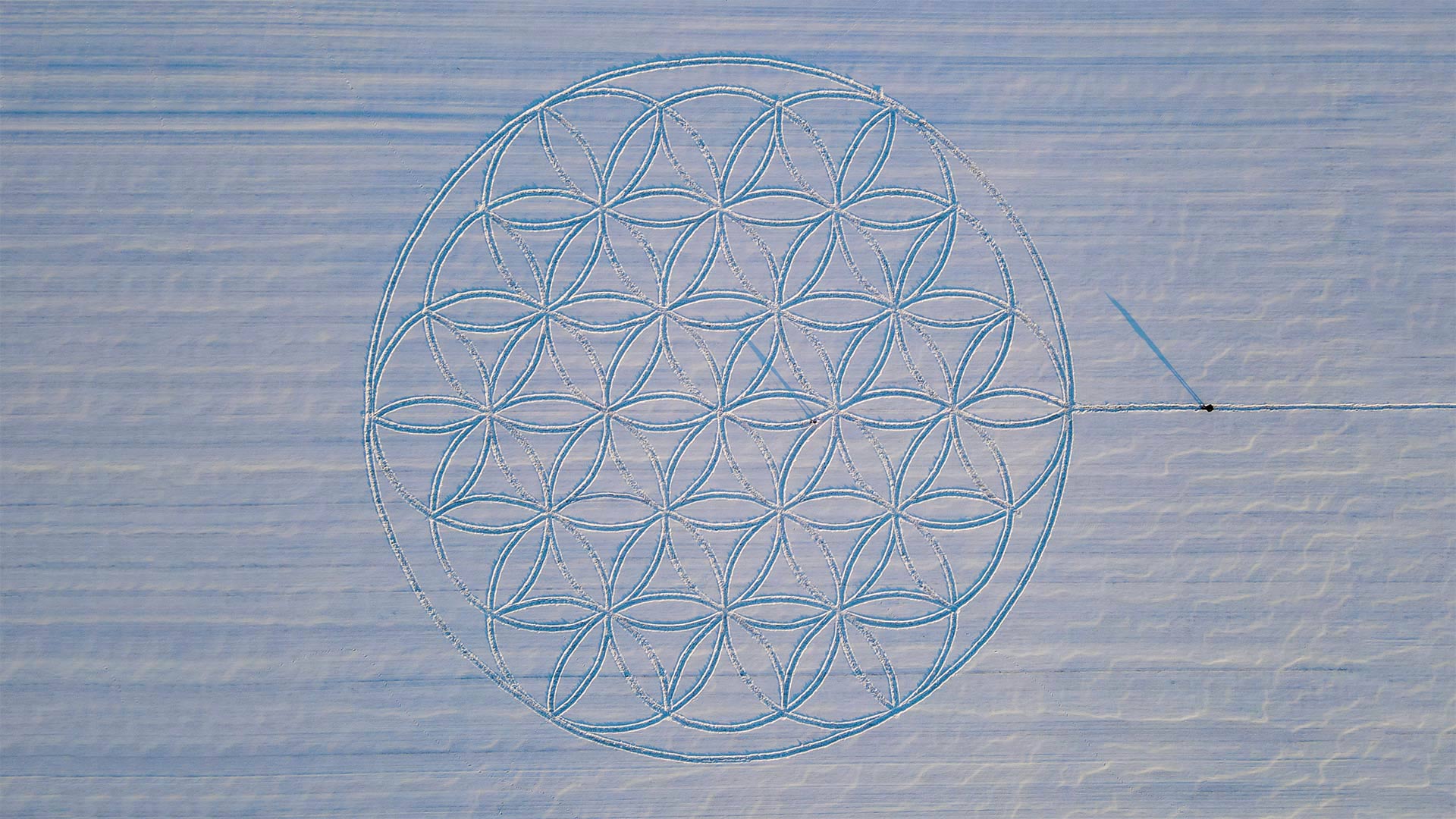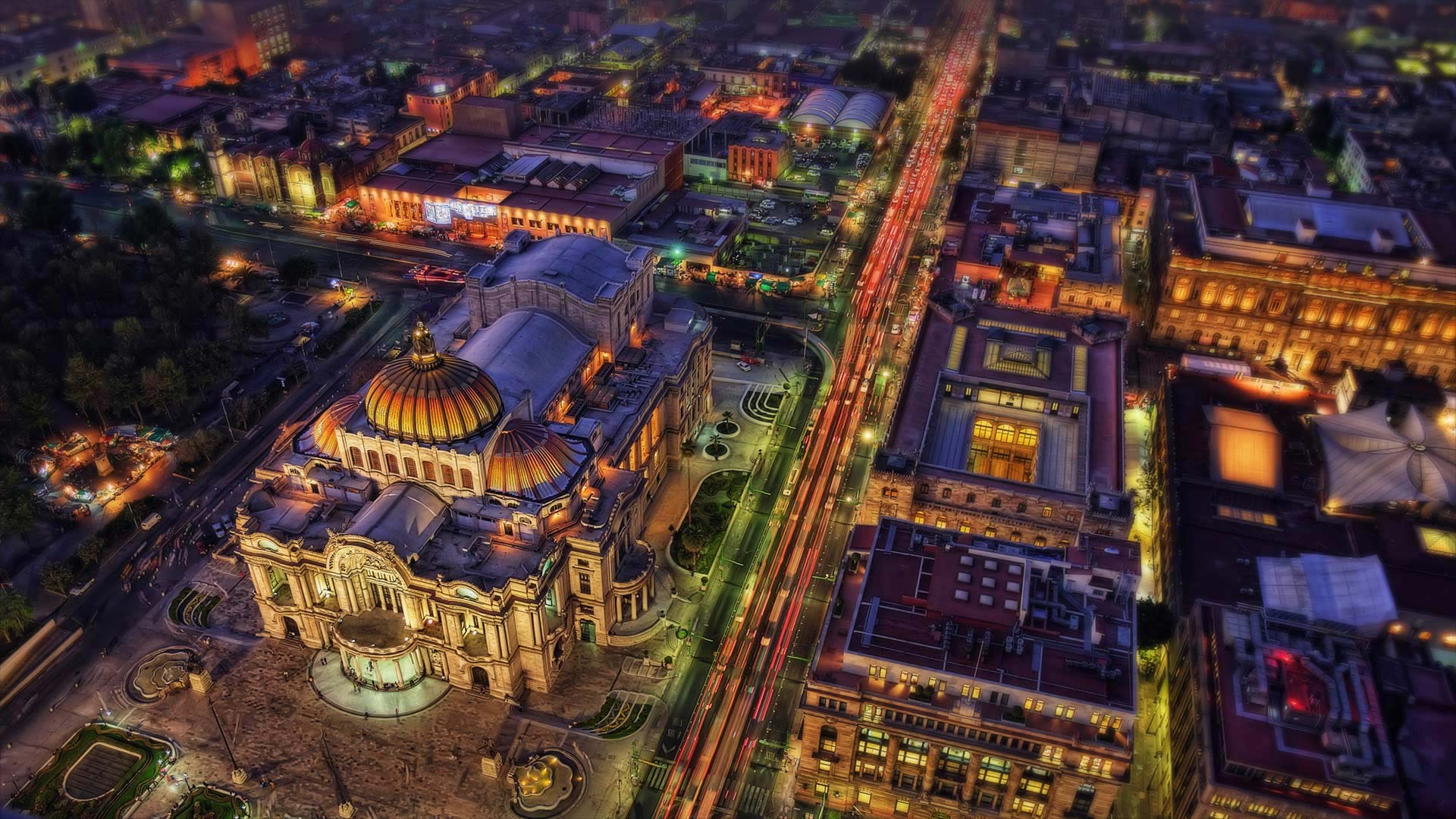标签 艺术 下的文章
艺术家迈克尔·乌伊在雪地上绘制的“生命之花”符号, 德国勃兰登堡雅各布斯多夫 The 'Flower of Life' symbol drawn in the snow by artist Michael Uy, Jacobsdorf, Brandenburg, Germany (© Patrick Pleul/picture alliance via Getty Images)

艺术家迈克尔·乌伊在雪地上绘制的“生命之花”符号, 德国勃兰登堡雅各布斯多夫 The 'Flower of Life' symbol drawn in the snow by artist Michael Uy, Jacobsdorf, Brandenburg, Germany (© Patrick Pleul/picture alliance via Getty Images)
Flower of Life symbol drawn in snow
German artist Michael Uy created this 'Flower of Life' geometric pattern in the snow in Brandenburg. Preparations began about a week before the snow's arrival, when Uy hammered 19 wooden posts into a field, carefully measuring the space between each post. After the snowfall, he walked near-perfect circles around all 19 pillars, using a string to keep an equal distance from the posts. The artist then used a broom to further remove the snow from his footprints and reveal the lines of the flower nearly 200 feet across. Uy's piece was fully visible only when the sun was low. And only until the next snow or warm day. Luckily, a drone was dispatched to snap this photograph.
The 'Flower of Life' is an ancient symbol long revered by various cultures around the world, from ancient Assyrians to modern pagans. The pattern is believed by some to be a visual representation of interconnectivity, energy, and harmony, by others to be a key to unlocking secrets of the universe. And hey, it looks cool. Especially on ice.
生命之花的象征画在雪地上
德国艺术家迈克尔·乌伊(Michael Uy)在勃兰登堡(Brandenburg)的雪中创造了这种“生命之花”几何图案。准备工作在大雪到来前大约一周开始,Uy将19根木桩锤入一块场地,仔细测量每根木桩之间的间距。下雪后,他绕着所有19根柱子几乎完美地走了一圈,用绳子与柱子保持相等的距离。然后,艺术家用扫帚进一步清除脚印上的积雪,并展示了近200英尺宽的花朵线条。乌伊的作品只有在太阳很低的时候才完全可见。直到下一场雪或温暖的一天。幸运的是,一架无人机被派去拍这张照片。
“生命之花”是一种古老的象征,从古代亚述人到现代异教徒,世界各地的各种文化都长期尊崇它。一些人认为这种模式是互联、能量和和谐的视觉表现,另一些人则认为它是解开宇宙秘密的钥匙。嘿,看起来很酷。尤其是在冰上。
墨西哥城贝拉斯艺术宫 Palacio de Bellas Artes, Mexico City (© Lukas Bischoff Photograph/Shutterstock)

墨西哥城贝拉斯艺术宫 Palacio de Bellas Artes, Mexico City (© Lukas Bischoff Photograph/Shutterstock)
A cry for independence
The Palacio de Bellas Artes in Mexico City has hosted art exhibits, music and dance performances, and much more since its opening. The decadent Art Nouveau building opened in 1934 but was originally planned to open for Mexico's 100th birthday years earlier, in 1916. To get that story, we must travel 200 miles from this spot and back in time even further than the early 20th century.
On September 16, 1810, in Dolores, Mexico, the 'Cry of Dolores' rang out, signaling a call to arms. The Mexican War of Independence would last 11 years, finally breaking the country free from Spain. Though the war also ended in the month of September, it is the start of the conflict—September 16—that Mexicans celebrate as their Independence Day.
要求独立的呼声
墨西哥城的贝拉斯艺术宫自开业以来举办了艺术展览、音乐和舞蹈表演等活动。这座颓废的新艺术建筑于1934年开业,但最初计划在1916年墨西哥100岁生日时开业。为了得到这个故事,我们必须从这个地方走200英里,回到比20世纪初更远的时间。
1810年9月16日,在墨西哥的多洛雷斯,响起了“多洛雷斯的呐喊”,发出了武装的信号。墨西哥独立战争将持续11年,最终使该国脱离西班牙。虽然战争也在9月份结束,但墨西哥人庆祝的独立日是9月16日冲突的开始。